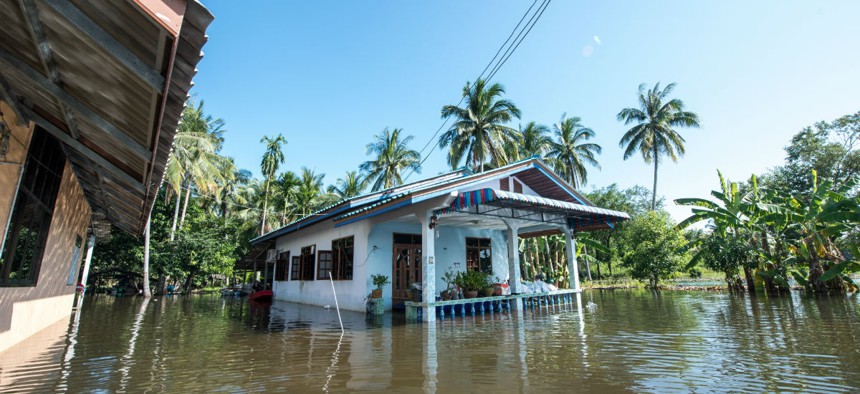
Shutterstock.com
How HUD Could Help More Families Affected by Natural Disasters
A program aimed at helping homeowners avoid foreclosure needs to be streamlined.
After the winds die down and the flood waters recede, natural disaster survivors begin the long process of putting the pieces of their lives back together. But for low-income homeowners, this period can exacerbate economic vulnerabilities, causing too many survivors to lose their homes amidst the struggle to rebuild. Earlier this year, HUD developed a new “disaster standalone partial claim” program to help homeowners who have mortgages insured by the Federal Housing Administration avoid foreclosure. However, unnecessary barriers to enrollment and the limited scope of the program place this critical lifeline out of reach for too many families struggling after recent storms and other disasters.
HUD introduced its new program in response to the 2017 hurricanes and wildfires to help borrowers impacted by natural disasters continue to make their mortgage payments and stay in their homes. Through this program, disaster survivors can access an interest-free second mortgage loan to cover up to one year of missed mortgage payments. Borrowers generally repay the loan when they sell the home or refinance, and their initial mortgage terms remain unchanged. For those who can access it, the program can be a life-saver.
For the partial claim option to work, mortgage servicers must be prepared to make eligibility determinations for an unexpected surge of homeowners when a disaster hits. But rather than streamlining the process, HUD’s recently updated program retains unnecessary roadblocks, potentially leaving many vulnerable homeowners out in the cold.
For example, FHA homeowners with variable incomes, including small business owners and hourly service workers, are likely to have trouble with a requirement that their wages be equal to or greater than their wages prior to the disaster. Small business owners often have to temporarily close their businesses during a disaster and its aftermath. Typically—and understandably—their income goes down post-disaster. The same goes for their employees and other retail and service workers who depend on a steady stream of customers to make ends meet. Those who have lost some of their wages as a result of a natural disaster, but who are able to make mortgage payments again—the very people who most need assistance keeping their homes—are unnecessarily blocked from the program’s benefits. HUD should establish a reasonable threshold below 100 percent of previous income to expand access to the program.
HUD’s process is also duplicative. Applicants must show they can afford their mortgage payments in addition to showing that their current income meets the department’s requirements. But if they were able to make their mortgage payments before the disaster, and their current income equals or exceeds their pre-disaster income, it should be obvious that they can still afford to make their payments, and HUD should not require them to prove that. Even if HUD were to adopt a threshold below 100 percent of pre-disaster income, it should be based on data analysis demonstrating likely affordability. Moreover, HUD requires excessive documentation of income and expenses for homeowners seeking hardship assistance. Department officials should act now to reduce this red tape, which can delay much-needed assistance.
HUD recently made improvements to the disaster standalone partial claim program, (i.e. expanding the number of months of back payments that can be covered by the program) but only for the survivors of Hurricanes Irma and Maria in Puerto Rico and the U.S. Virgin Islands. The improvements should also apply to disasters in other states and territories. Texans impacted by Hurricane Harvey and Californians impacted by the wildfires, for example, are unable to access this revised program to help deal with storm-related back payments. Survivors of Florence in the Carolinas and Hurricane Michael in Florida also are left out.
HUD’s new partial claim program must be broadly available to survivors of natural disasters who could use it to stabilize their mortgages in areas where the recovery is slow. Until access to the partial claim option is expanded and further streamlined, survivors who can afford their current payments but need help catching up will be more likely to lose their homes and face further devastation.
Alys Cohen is a staff attorney at the National Consumer Law Center focusing on mortgage lending, foreclosure prevention, and low-income homeownership. She also directs the Center’s disaster response work.
NEXT STORY: This May Reduce Racial Bias In Groups At Work






